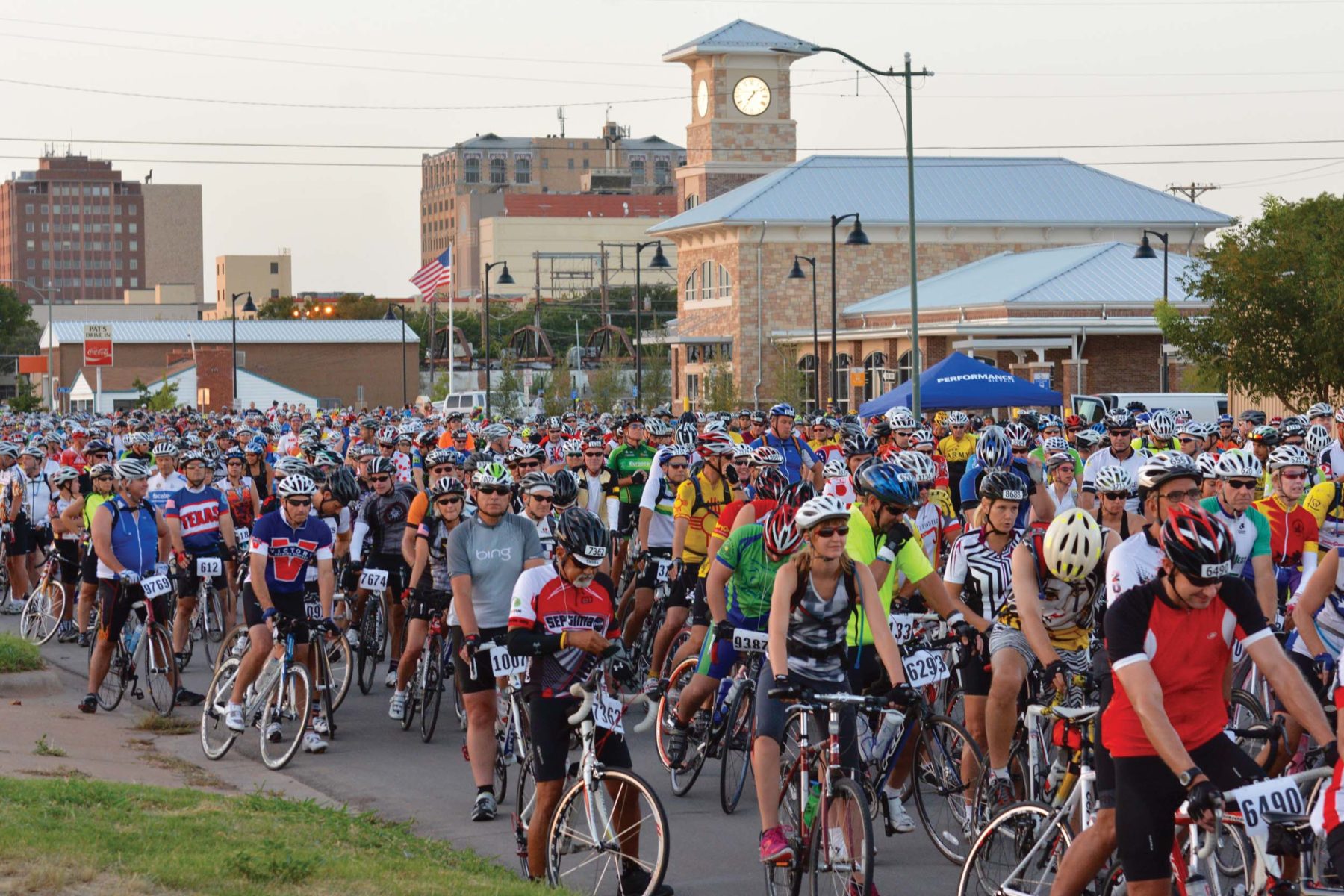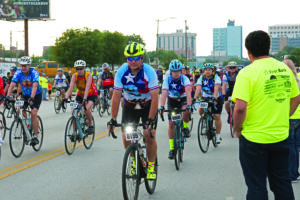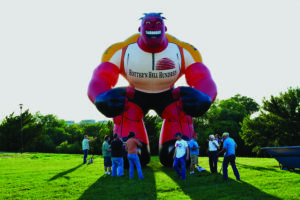Hotter’N Hell Hundred

In 1982, Wichita Falls was on the hunt for some grand new way to celebrate their centennial. For many towns, that kind of celebration usually ends up looking a lot like a big block party — cookouts, parades and free goodies. But the Wichita Falls Bicycling Club had other ideas. Why not honor the 100 years with a 100-mile bike ride in the 100-degree Texas heat? That’s what became known as the Hotter’N Hell Hundred.
Fast forward to 2018, and the weekend from hell had almost 12,000 registrants last year. It’s become the largest single-day 100-mile race in the country, and it’s a weekend packed full of events. With different ride lengths throughout the weekend and a running race on the final morning, it can be as hot and as hellish as you want it to be.
Executive director of the Hotter’N Hell Ride, Ben J. Filer — also known as “Chip” — has also been an avid participant in the HH100 community for several years. The community is strong and full of people who love to ride and love a challenge.
Noting the changes and additions to the weekend that have been made over the past few years, Filer also noted that being surrounded by amazing people would be a sure bet on what to expect from this endurance race.
“If nothing else, you can bet you’ll meet some great people and have a heck of a lot of fun,” Filer says.
The rides are difficult in the heat. Filer even says that the term “race” is not used for the Hotter’N Hell Hundred, because it implies some kind of need to give it your all and maybe a little too much. Instead, the extreme heat endurance ride is the challenge that draws people from all over to test their limits, without worrying about it being a race.
As with any endurance event, preparation is key. So, we asked local personal trainer, musician and health enthusiast Drew Davis for some pointers for preparing to ride through Hell.

AFM: 100 miles is a lot, but by now, they likely have been cycling to train. But 100 degrees — how do they train for something like that?
DD: Soak up the sun now. Just like if you were going to hike Machu Picchu, you would need to go to Peru a few days early to get acclimated to the altitude. If you are going to torture yourself with an abundance of physical fitness in guaranteed Hotter’N Hell temperatures, you want to be acclimated to the heat. And here you are, living in that sweltering, good old fire hole they call Texas 24/7, then you have that home-field advantage.
AFM: What are some ways to utilize that home-field heat?
DD: It’s important that you take advantage of these long, hot summer days before the ride so you can start to learn how your body responds to working out in the heat. Plan shorter rides during peak sun/heat hours (i.e. 2 to 5 p.m.). If you can make it 30 miles in a shade-free 4 p.m. downtown Austin, you have a much better chance making it 100 miles at 7 a.m. You have the ultimate home-court advantage at your disposal, so utilize it in your training regimen.

AFM: The Hotter’N Hell Hundred is the birthplace of the CamelBak Hydration Pack, so it’s known to dehydrate you fast. How do you recommend preparing your body for that kind of water loss?
DD: Every body is different, so you have to make a hydration plan. You’ll need to work with your physician and/or a personal trainer to develop a hydration plan that is right for your body. Dehydration is real. It is not going to do you any favors, and it can even become dangerous and scary. But overhydration is also real. Both pose different dangers and threats, especially in an endurance situation and especially in a 100-degree race situation. You need to make sure you know how much water your body needs and have a rehydration plan as you go.
AFM: What are some norms for a hydration plan?
DD: For most, this will include adding some type of electrolytes to your fluids during the race and definitely after the race. Be sure to drink plenty of water in the days leading up to the race. Again, work with your physician and/or personal trainer to make a plan that is right for you. This plan should include the three to four weeks leading up to the race, the actual race and the hours post-race.
AFM: So, it’s hot. What’s the best thing to wear? Should we all just ride naked?
DD: While burning all of our clothes and running around nude might sound like the most appealing option here in Texas between Memorial Day and Labor Day, the best way to keep cool is quite the opposite. You want to keep the sun from beating down on your skin — and not just because of the potential sunburn that awaits you. Don’t forget to sunscreen from head to toe. Lightweight microfiber fabrics can actually help sweat spread out. I know no one particularly likes being sweaty, but sweat is the main form of how our body releases heat during exercise in hot temperatures. We want to keep our body as cool as possible. When sweat evaporates on the skin, it helps us lose heat. Microfiber fabrics help spread the sweat out and, therefore, help cool all areas covered by it. Even better, choose light colors or just go all-out white to help reflect the heat away from your body.






